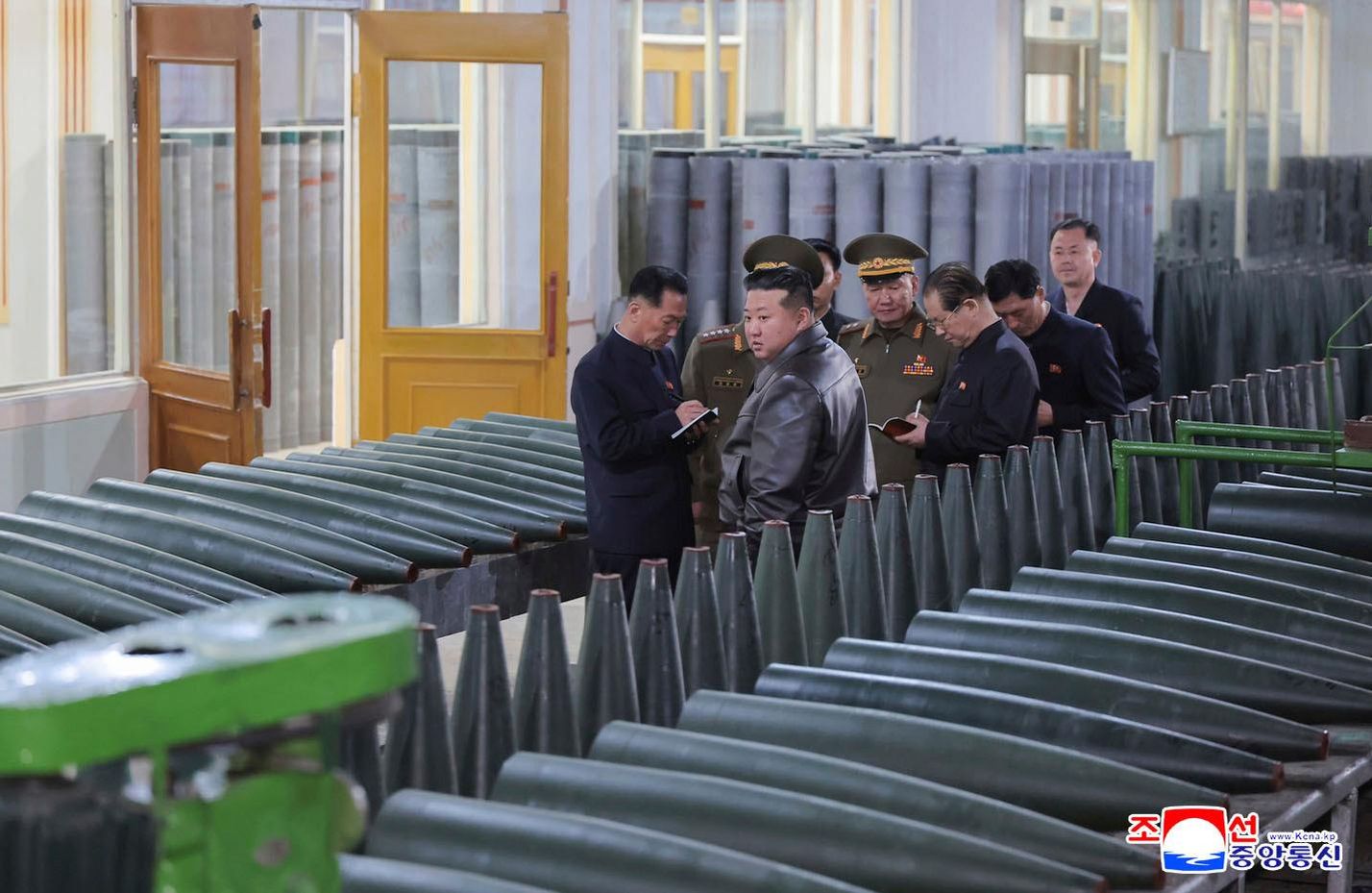
North Korea dispatched 11,000 troops to Russia for its war in Ukraine and supplied Moscow with at least 100 ballistic missiles and millions of rounds of artillery shells and rockets, according to an international intelligence report.
In exchange, Russia supplied North Korea with air defense missiles, electronic warfare gear and technology that helped improve the guidance of North Korean missiles.
Large shipments of Russian oil were sent to North Korea in violation of multiple U.N. sanctions against Pyongyang, according to the first report by the Multilateral Sanctions Monitoring Team, a new international monitoring group made up of United Nations members, including the U.S.
The report provides the most complete information made public to date on the military and other cooperation between North Korea and Russia.
Both nations acknowledged the weapons and troop support in April, the report said.
The North Korean troops’ deployment was approved by North Korean leader Kim Jong-un as part of an agreement between the two states in 2024 called the Treaty on Comprehensive Strategic Partnership.
The report includes satellite photos of the weapons shipments and troops in Russia including a North Korean self-propelled gun on a train in Russia, and North Korean multiple rocket launcher ammunition found in Ukraine.
Evidence gathered by intelligence services of the 11 U.N. members in the monitoring group reveals a “myriad of unlawful activities” prohibited under U.N. resolutions.
Arms and related military goods were transferred by ship, aircraft and rail and included artillery, ballistic missiles, and combat vehicles from North Korea to Russia for use in the Ukraine war
Russia also conducted training for North Korean troops deployed to Russia for “direct support of Russia’s war against Ukraine,” the report said.
Refined petroleum sent to North Korea from Russia far exceeded an annual U.N. Security Council limit.
Russia also maintained prohibited financial and banking relations with North Korea.
The report said between January and December 2024 alone, more than 100 North Korean ballistic missiles were sent to Russia and used in Ukraine “to destroy civilian infrastructure and terrorize populated areas such as Kyiv and Zaporizhzhia.”
An investigation by three member states found that a North Korean Hwasong-11 short-range ballistic missile was used to strike Kharkiv, Ukraine, in January 2024.
The report also said there are indications the accuracy of North Korean ballistic missiles is increasing as a result of data supplied by Russian forces using the weapons against Ukraine.
“Russia has supported North Korea’s ballistic missile programs by providing data feedback on ballistic missiles, leading to improvements in missile guidance performance,” the report said.
North Korea also supplied the Russians with Bulsae-4 anti-tank missiles and rocket-propelled grenade anti-tank rockets.
Three brigade sets of heavy artillery were also sent to Russia including 170 millimeter long-range self-propelled artillery pieces, 240 millimeter long-range multiple rocket launchers, more than 200 total vehicles, self-propelled guns, multiple rocket launchers, and reload vehicles for both weapons systems.
“Both the DPRK and Russia are violating the U.N. arms embargo on the DPRK through these transfers,” the report said, using the acronym for Democratic People’s Republic of Korea, the official name of North Korea.
An estimated 9 million rounds of mixed artillery and multiple rocket launcher ammunition were sent from North Korea to Russia in 2024, the report said.
Another intelligence report estimated that Russian vessels delivered 4.2 million to 5.8 million rounds of 122 millimeter and 152 millimeter munitions between August 2023 and March 2025.
One member state cited in the report said North Korea and Russia likely discussed the deployment of troops to Russia in August 2024 after Ukrainian forces moved into Russia’s Kursk Oblast.
The first North Korean troops were dispatched in August 2024 and were detected wearing Russian military uniforms and using Russian aircraft and naval vessels.
The troops were moved to the far western area of Kurst Oblast, where they took part in combat operations with the Russians.
“These [North Korean] soldiers were trained by Russian forces in artillery, UAV, and basic infantry operations including trench clearing, which are critical skills for frontline operations,” the report said.
Russian air defense systems were sent to North Korea beginning in November 2024 aboard Russian cargo aircraft.
The systems include at least one Pantsir-class combat vehicle, a mobile air defense system designed to target fixed and rotary wing-aircraft, cruise missiles, precision munitions, and unmanned aerial vehicles.
“The deployment of the Pantsir provides [North Korea] with a more modernized air defense system compared to its current inventory of legacy Russian systems and its domestically produced systems that have yet to be deployed,” the report said.
Regarding Russian oil shipments, the report said a dozen North Korean tankers were identified at a Russian Far East port 43 times and took on more than a million barrels of refined petroleum between March and October 2024.
U.N. sanctions limit the amount of foreign oil North Korea can obtain to 500,000 barrels annually.
The monitoring team, formed in October, was created to monitor and report on North Korean compliance with multiple sanctions imposed on the rogue state for missile and nuclear activities going back more than a decade that the report says pose a threat to international peace and security.








